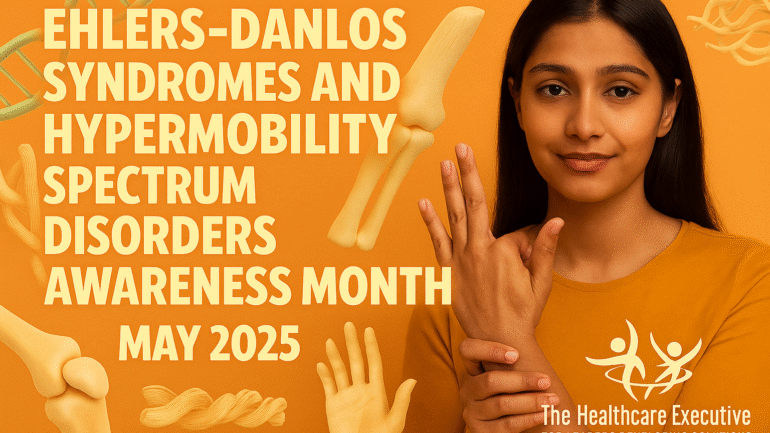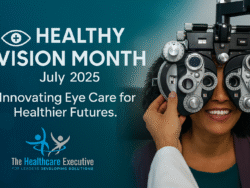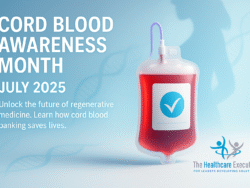Ehlers-Danlos Syndromes Awareness Month – May 2025

- Posted by Greg Wahlstrom, MBA, HCM
- Posted in Health Observance Calendar
Hospital Leadership in Chronic Pain, Genetic Care, and Multidisciplinary Collaboration
Published: May 1, 2025
Ehlers-Danlos Awareness Month 2025 brings attention to a group of underrecognized, often debilitating connective tissue disorders. Each May, health systems are called to focus on the structural and systemic impact of Ehlers-Danlos Syndromes (EDS) and Hypermobility Spectrum Disorders (HSD). Affecting the body’s collagen, these conditions can cause joint hypermobility, chronic pain, fragile skin, and widespread dysfunction. While EDS includes 13 subtypes, hypermobile EDS and HSD are the most common—and most frequently misdiagnosed. Hospital leaders are uniquely positioned to raise diagnostic awareness, support coordinated care teams, and advocate for patients whose symptoms are often dismissed or misunderstood. Multidisciplinary clinics that integrate genetics, rheumatology, cardiology, gastroenterology, and pain management provide the gold standard of care. Inadequate recognition of EDS and HSD delays treatment and contributes to unnecessary testing, psychological distress, and patient mistrust. This month presents an opportunity to reframe how hospitals approach complex chronic illness and invisible disabilities. By prioritizing rare disease education and cross-specialty coordination, health systems can improve outcomes and restore trust. EDS is not rare to the people who live with it—it’s simply rarely diagnosed correctly. As summarized by the National Center for Biotechnology Information, “EDS phenotypes range from mild skin hyperextensibility to life-threatening vascular fragility, requiring clinical discernment and subtype-specific expertise” (National Academies of Sciences, 2022).
Accurate diagnosis remains a challenge in EDS and HSD, especially for patients in primary care settings or underserved regions. Many individuals spend years seeking answers, often receiving misdiagnoses of fibromyalgia, anxiety, or psychosomatic conditions. Genetic testing can confirm most EDS subtypes, but hypermobile EDS remains a clinical diagnosis, requiring skilled providers familiar with the 2017 international criteria. A clinical review published in American Family Physician highlights that hypermobile Ehler’s-Danlos Syndrome and Hypermobility Spectrum Disorders are frequently underrecognized in primary care, often misdiagnosed as fibromyalgia, somatic symptom disorder, or anxiety reinforcing the need for clinician training in hypermobility assessment and formal diagnostic tools (Yew, Kamps-Schmitt, & Borge, 2021). Hospitals can improve diagnostic timelines by training frontline providers to recognize hallmark features—such as hypermobility, frequent joint dislocations, unexplained bruising, and autonomic dysfunction. Equally important is improving referral pathways to geneticists, physical therapists, and pain specialists. Advanced imaging and assessments like tilt-table testing and Beighton scoring can enhance clinical clarity. EDS also intersects with mast cell activation, gastrointestinal motility issues, and vascular complications, requiring broad institutional understanding. Hospital systems that implement care coordination for these complex patients not only improve clinical outcomes but also reduce unnecessary utilization. Timely, compassionate recognition is one of the most cost-effective interventions in chronic care.
Pain is a persistent and often disabling feature of EDS and HSD—yet access to adequate pain management remains inconsistent and stigmatized. Patients may experience joint instability, soft tissue injuries, nerve compression, and central sensitization, often without objective imaging findings. As a result, many feel invalidated by the healthcare system. “Current guidelines for treating chronic pain emphasize a multidisciplinary and bio psychosocial approach that integrates pharmacological and non-pharmacologic interventions based on evidence-based medicine” (Hakobyan et al., 2022). Hospital-based pain programs that integrate physical therapy, behavioral health, and pharmacologic support offer a more comprehensive model of care. Additionally, health systems must ensure that patients with connective tissue disorders are not unfairly excluded from procedures or labeled as drug-seeking when seeking relief. Innovative strategies, such as virtual pain consults, wearable joint stabilization technologies, and integrative medicine, can improve quality of life. Leadership support is needed to develop protocols that balance safety with symptom relief. As hospitals expand chronic care strategies, EDS and HSD should be included in long-term pain care innovation. Suffering in silence is not a treatment plan—empathy and evidence-based support must guide care delivery.
Health equity is central to improving care for EDS and HSD, especially for women and patients of color who are historically overlooked. Studies suggest significant underdiagnosis in Black, Hispanic, and Indigenous communities, where assumptions about race, gender, and pain perception can delay or prevent diagnosis. A 2024 study on EDS patient demographics highlights this imbalance, stating, “Of the 947 survey respondents, 93% were White” (Yuan, McGrath, & Chopra, 2024). Hospital systems must embed rare disease equity into DEI strategies and ensure that culturally responsive care extends to invisible illnesses. Community outreach, language access, and better representation in diagnostic algorithms are imperative for expanding access. Furthermore, research must reflect population diversity to guide future diagnostic criteria and therapeutic interventions. Hospitals should also examine internal data to identify disparities in referrals, diagnosis, and treatment plans for chronic pain patients. Collaboration with advocacy groups such as The Ehlers-Danlos Society can strengthen equity and awareness efforts. Health systems must dismantle diagnostic bias and meet patients where they are—not where bias assumes they should be. This awareness month invites leaders to see the whole patient, not just isolated symptoms.
Hospital executives have a powerful role in reshaping the care landscape for Ehlers-Danlos Syndromes and Hypermobility Spectrum Disorders. From establishing integrated rare disease clinics to investing in training programs for underserved providers, leadership decisions directly impact access, dignity, and clinical outcomes. Administrators are encouraged to use this month to assess their system’s readiness to support complex chronic conditions. Recent patient surveys reveal that “67% of individuals with EDS report their medical needs are unmet, and 87% express interest in a multidisciplinary clinic staffed with pain management, physical therapy, rheumatology, and genetics” (Jones et al., 2022). Hosting educational events, featuring patient stories, and spotlighting care innovations are meaningful ways to drive institutional culture change. Quality improvement teams can evaluate diagnostic delays, care gaps, and patient satisfaction scores related to EDS and HSD care. More than a genetic condition, EDS is a lens through which healthcare’s strengths and shortcomings are revealed. Leading with intention—toward validation, coordination, and equity—is what this awareness month calls for. Let us move beyond symbolic recognition and into sustained, systemwide transformation. Ehlers-Danlos care is not an edge case—it’s a test of how comprehensively we care.
Discover More
Hospitals and healthcare leaders have an opportunity to reshape how complex chronic conditions like Ehlers-Danlos Syndromes and Hypermobility Spectrum Disorders are managed and understood. May is not only a time for awareness—it’s a call to action. Whether you’re a hospital executive, clinical leader, or health equity strategist, this month invites you to explore rare disease infrastructure, reduce diagnostic delays, and build patient-centered models of care. Start by evaluating your organization’s approach to multidisciplinary collaboration, chronic pain, and genetic diagnosis. Awareness begins with learning—but it must lead to sustainable change.
Explore more health observances on our calendar and advance institutional strategies that elevate rare disease care.
Internal Resources
External Resources
- The Ehlers-Danlos Society – Awareness Month Resources
- National Academies of Sciences, Engineering, and Medicine; Health and Medicine Division; Board on Health Care Services; Committee on Selected Heritable Disorders of Connective Tissue and Disability; Wedge RA, Cartaxo T, Spicer CM, et al., editors. Selected Heritable Disorders of Connective Tissue and Disability. Washington (DC): National Academies Press (US); 2022 Jul 8. 4, Ehlers-Danlos Syndromes and Hypermobility Spectrum Disorders. Available from: https://www.ncbi.nlm.nih.gov/books/NBK584966/
- Yew KS, Kamps-Schmitt KA, Borge R. Hypermobile Ehlers-Danlos Syndrome and Hypermobility Spectrum Disorders. Am Fam Physician. 2021 Apr 15;103(8):481-492. PMID: 33856167. Available from: https://pubmed.ncbi.nlm.nih.gov/33856167/?dopt=Abstract/
- Whalen, K. C., & Crone, W. (2022). Multidisciplinary Approach to Treating Chronic Pain in Patients with Ehlers–Danlos Syndrome: Critically Appraised Topic. Journal of Pain Research, 15, 2893–2904. https://doi.org/10.2147/JPR.S377790
- NIH Genetic and Rare Diseases (GARD) – EDS Overview
- Frontiers in Pediatrics – Global Diagnostic Disparities in EDS
- Multidisciplinary Care Needs in EDS – Molecular Genetics & Genomic Medicine (Jones et al., 2022)
- Frontiers in Pediatrics – Global Diagnostic Disparities in EDS
- International Scientific Symposium 2025 – The Ehlers-Danlos Society



